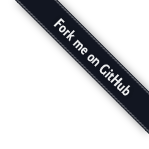Introduction
Project goal is to simplify the usage of the CQRS Pattern under backbone.js by providing needed infrastructure.
To use CQRS on the clientside and inside Backbone.js we will need to push events to the browser. You can achieve this via websockets, flash, long polling or any other technique around.
Download
INITIALIZATION
To configure Backbone.CQRS you got to init the Backbone.CQRS.hub.
// given your events look something like this
var event = {
name: 'personChanged', // the unique name of this event
payload: {
id: 'someId', // the provided id should match the Backbone.Model.Id
anotherValue: 'something'
}
};
// you can go with defaults
Backbone.CQRS.hub.init();
You can override a few values on initialisation:
Backbone.CQRS.hub.init({
// messageing channels
commandsChannel: 'commands',
eventsChannel: 'events',
// field lookup
eventNameAttr: 'name',
eventModelIdAttr: 'payload.id',
eventResponseToCommandId: 'commandId',
// override the default parse
parseEvent: function(msg) {
var data = JSON.parse(msg);
return {
name: data.eventName,
payload: data.payload,
commandId: data.commandId
};
}
});
override default Backbone.sync
As you only want to GET models, collections from server and do all other operations ( update, delete) via CQRS you can override Backbone.sync with Backbone.CQRS.sync, which will only GET data from server and call success callback immediately for all other ops.
// override Backbone.sync with CQRS.sync which allows only GET method
Backbone.sync = Backbone.CQRS.sync;
Wire up commands and events to/from sever
The interface to Backbone.CQRS is provided through Backbone.CQRS.hub:
// pass in events from your socket
mySocket.on('events', function(data){
Backbone.CQRS.hub.emit('events', data);
});
// pass commands to socket
Backbone.CQRS.hub.on('commands', function(data) {
mySocket.emit('commands', data);
});
EVENT HANDLING
Denormalize event data
First create a denormalizer:
// personChange event
var personCreatedHandler = new Backbone.CQRS.EventDenormalizer({
forModel: 'person',
forEvent: 'personChanged'
});
var person = Backbone.Model.extend({modelName: 'person'});
var me = new person({id: '1'});
me.bindCQRS();
all personChanged events payload attributes for id = 1 will be applied to the personModel by simply set the event data to the model.
For events that create or delete a model you can create your denormalizer like this:
// personCreated event
var personCreatedHandler = new Backbone.CQRS.EventDenormalizer({
methode: 'create', // change methode to create
model: Person, // pass in model you want create with eventdata
collection: persons, // pass in collection
// or function returning collection you want to add to:
// collection: function() { return my.not.yet.set.collection },
// bindings
forModel: 'person',
forEvent: 'personCreated'
});
// personDeleted event
var personDeletedHandler = new Backbone.CQRS.EventDenormalizer({
methode: 'delete', // change methode to delete (will call unbindCQRS and destroy on model)
// bindings
forModel: 'person',
forEvent: 'personDeleted'
});
Advanced options for denormalization
1) change the attribute for model.id or data to set on model
By default Backbone.CQRS will apply event.payload to model.
var PersonCreatedDenormalizer = Backbone.CQRS.EventDenormalizer.extend({
payloadValue: 'payload.person' // payload person will be set on model instead of payload
modelIdAttr: 'payload.person.Id', // payload.person.id will be model's id instead of payload.id
});
var personCreatedHandler = new PersonCreatedDenormalizer({
forModel: 'person',
forEvent: 'personChanged'
});
2) override the parse function
var PersonCreatedDenormalizer = Backbone.CQRS.EventDenormalizer.extend({
parse: function(evt) {
// evt is a Backbone.CQRS.Event (extending model) so:
var data = evt.toJSON();
return {
value1: data.myAttr.child,
value2: data.myAttr2.child.child
//...
};
}
});
var personCreatedHandler = new PersonCreatedDenormalizer({
forModel: 'person',
forEvent: 'personChanged'
});
3) override the apply function in denormalizer
var PersonCreatedDenormalizer = Backbone.CQRS.EventDenormalizer.extend({
apply: function(data, model) {
model.set(data.payload.myAttr);
},
// optional override parse too
parse: function(evt) {
// ...
}
});
var personCreatedHandler = new PersonCreatedDenormalizer({
forModel: 'person',
forEvent: 'personChanged'
});
This way you can control the apply function for the model inside of the eventdenormalizer.
4) override apply function in your model
If you prefer to have the apply function inside you model you could override this too, but be aware all events will be routed to the same apply function, so you will have to distinguish events inside your models apply function!
You could override the apply function in your model like this to get more control:
var PersonCreatedDenormalizer = Backbone.CQRS.EventDenormalizer.extend({
parse: function(evt) {
return evt; // return the pure event object
}
});
var personCreatedHandler = new PersonCreatedDenormalizer({
forModel: 'person',
forEvent: 'personChanged'
});
var person = Backbone.Model.extend({
modelName: 'person',
apply: function(evt) {
if (evt.name === 'personChanged') {
this.set(evt.payload);
}
}
});
var me = new person({id: '1'});
me.bindCQRS();
5) override handle function in denormalizer
For creational events which aren't applied to an existing model you could override the handle function in the eventdenormalizer:
var PersonSpecialHandler = Backbone.CQRS.EventDenormalizer.extend({
handle: function(evt) {
// do something
}
});
var personSpecialHandler = new PersonSpecialHandler({
forModel: 'person',
forEvent: 'personCreated'
});
COMMAND HANDLING
send commands
To send commands just:
var cmd = new Backbone.CQRS.Command({
name: 'changePerson',
payload: {
id: 8,
name: 'my name'
}
});
// emit it
cmd.emit();
observe commands
if you want to react on events in respond to a command you can:
var cmd = new Backbone.CQRS.Command({
name: 'changePerson',
commandId: 'someUniqueId', // bring this back in event to resolve it!
payload: {
id: 8,
name: 'my name'
}
});
// observe it
cmd.observe(function(event) {
// do something
});
// emit it
cmd.emit();
or just pass in the callback on emit:
// emit it
cmd.emit(function(event) {
// do something
}););
By default backbone.CQRS will look for a field commandId in the event. You can
override this value or provide a own function to get the commandId in which the event
was send as response:
Backbone.CQRS.hub.init({
eventResponseToCommandId: 'commandId', // override with another value
// override the getCommandId function
getCommandId: function(data) {
return data.msgId.substring(0, data.msgId.indexOf('.')); // or whatever
}
});
Samples
- sample folder A pure static sample
- nodeCQRS Sample implementation using socket.io
Release Notes
v0.5.6
- small fixes
v0.5.5
- customizable attribute lookup for model.id and model.data in eventdenormalizers
- changed order: first denormalize than call observers for an event
v0.5.0
- simplified observe of command
v0.4.1
- tests
- samples
- basic event and command handling
